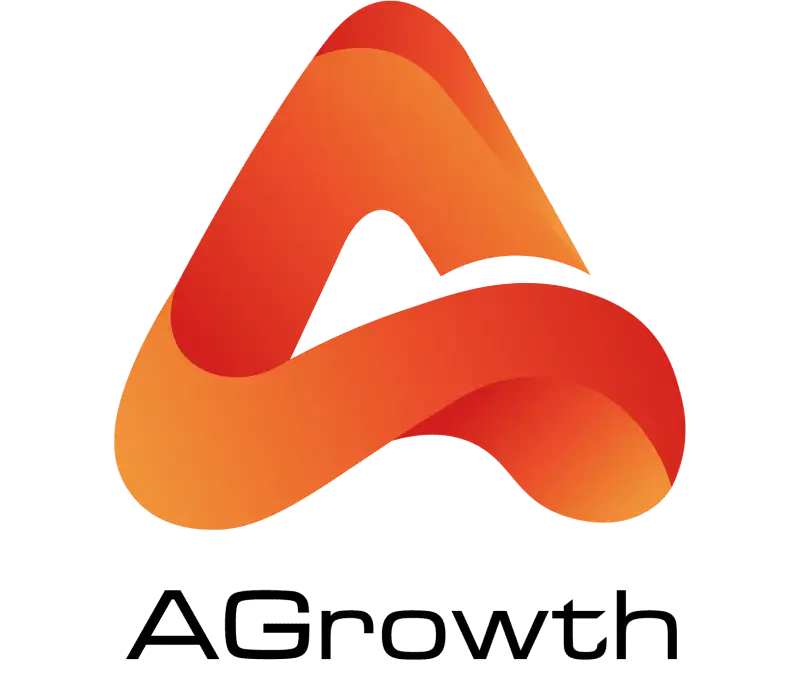
Table of Contents
Facebook Ads Bidding Strategies: How to Choose and Optimize for Better Results
Choosing the right Facebook Ads bidding strategy can make or break your campaign performance. Even with strong creative and precise targeting, inefficient bidding can lead to wasted ad spend, unstable delivery, or limited reach.
In Facebook’s auction system, advertisers compete not only with bids but also with ad quality and estimated performance. Understanding how this system works—and aligning your strategy with your business goals—helps you win more auctions at the lowest possible cost.
This guide will break down how Facebook ad bidding works, explain each bid type in detail, and show you advanced optimization techniques to help experienced marketers refine their campaigns for better ROI.
What Are Facebook Ads Bidding Strategies?
At its core, Facebook ad bidding is the process of telling Meta’s algorithm how much you’re willing to pay to achieve your desired outcome—whether that’s a click, conversion, or purchase.
According to Meta’s official documentation, “When you create a campaign, you set a bid strategy to tell our system how to bid for you in each ad auction”.
In every auction, Facebook calculates a “total value” for each ad by combining three main factors:
-
Bid – the amount you’re willing to pay for a result.
-
Estimated Action Rate (EAR) – how likely the user is to complete your desired action.
-
Ad Quality – how relevant and engaging your ad is compared to others.
This means the highest bid doesn’t automatically win. The ad with the best combination of bid × performance potential × quality gets the impression. This is why bidding strategy selection is critical—it helps you guide how Facebook balances cost and results.
While your bid is crucial, Ad Quality is equally important. Ensuring your creatives are optimized starts with using the correct Facebook ad size and specifications for each placement.
How Facebook Ad Bidding Works
It’s essential to understand the auction logic. Facebook runs billions of auctions daily, deciding which ads appear to each user. Each time a person opens the app, an auction takes place among all eligible ads targeting that user. Facebook evaluates every ad with the formula:
Total Value = Bid × Estimated Action Rate + Ad Quality Score
The platform prioritizes the ad that provides the most overall value to both advertisers and users. Ads that are relevant, engaging, and likely to get results can beat higher bids simply because they promise better outcomes for Facebook’s ecosystem.
Types of Facebook Ads Bidding Strategies
Facebook offers multiple bidding strategies, designed to match different goals and experience levels. The three primary categories are Spend-based, Goal-based, and Manual bidding. Each has its own balance of automation, control, and risk.
Spend-Based Bidding
Spend-based bidding is ideal for advertisers who want maximum delivery and don’t need strict control over cost per result. Facebook automatically optimizes your bids to spend your full budget efficiently.
Lowest Cost
The Lowest Cost (previously known as automatic bidding) is the simplest approach. You let Facebook handle the bidding to get the most results possible for your budget.
Meta defines it as “a strategy that gets you the most results for your budget while spending it efficiently”.
This works best for:
-
Broad awareness or traffic campaigns
-
New audience testing
-
Early-stage campaigns without strict CPA goals
However, the Lowest Cost can lead to inconsistent CPAs in competitive markets like the US or UK, where CPMs fluctuate heavily.
While Lowest Cost bidding manages your spend, understanding the baseline expenses is vital. To learn more about average benchmarks and what drives up expenses, read our full breakdown of Facebook ad cost.
Highest Value
“Highest Value” bidding focuses on maximizing conversion value rather than the number of conversions. It’s ideal for eCommerce campaigns where revenue matters more than volume.
The algorithm prioritizes users likely to generate high-value purchases, even if that means fewer conversions overall.
Goal-Based Bidding
Goal-based strategies give you more control over cost efficiency. You tell Facebook the target cost or return you want, and it tries to deliver within those parameters.
Cost Cap
Cost Cap helps you maintain a stable average cost per result. Meta’s official guide explains:
“Cost cap helps control costs while getting the most volume of results possible for your average cost goal.”
This strategy is excellent for advertisers who want a predictable CPA but still value reach and efficiency.
Best use cases:
-
Lead generation campaigns
-
App installs or subscription sign-ups
-
Brands scaling proven audiences
It’s often the go-to choice for advanced performance marketers, as it balances control with delivery flexibility.
Minimum ROAS
Minimum ROAS (Return on Ad Spend) is designed for e-commerce and value-based campaigns. You set the minimum ROAS threshold you want to maintain, and Facebook prioritizes delivery toward users who can meet or exceed that return.
Use it when:
-
You have high-volume conversion data
-
You track purchase value through Meta Pixel or Conversions API
-
Profitability consistency is more important than raw scale
Manual Bidding
Manual bidding gives advertisers full control over the maximum amount they’re willing to pay for each result. It requires close monitoring but can outperform automated strategies when used strategically.
Bid Cap allows you to set a strict ceiling on your bid in every auction. It ensures Facebook never bids higher than your limit, regardless of competition.
However, this approach demands:
-
Strong knowledge of conversion metrics
-
Regular bid adjustments to stay competitive
-
Sufficient budget to exit the learning phase
In markets like the US, where competition is intense, Bid Cap can prevent overspending—but if set too low, it may throttle delivery.
How Do You Choose the Right Bid Strategy?
Selecting the right bidding strategy depends on your business goal, budget flexibility, and campaign maturity.
Here’s a general framework:
|
Objective |
Recommended Strategy |
Reason |
|
Awareness / Reach |
Lowest Cost |
Maximize exposure |
|
Lead Generation |
Cost Cap |
Balance CPA control & volume |
|
eCommerce |
Minimum ROAS |
Prioritize revenue efficiency |
|
Retargeting |
Bid Cap |
Strict cost control |
|
Testing New Audiences |
Lowest Cost |
Fast data collection |
When in doubt, start with Cost Cap for predictable performance, then experiment with Bid Cap once you understand your conversion economics.
Pro Tip: Keep bids high enough to exit the learning phase—insufficient bids often cause “Learning Limited” delivery. You can learn more in our guide on the Facebook Ads Learning Phase.
Advanced Bidding Techniques for High-Performing Stores
Once you’ve mastered the fundamentals of Facebook bidding, scaling profitably requires a deeper understanding of how to fine-tune bids, audiences, and budget signals to work with Meta’s algorithm — not against it. High-performing e-commerce brands don’t just “set and forget” their bidding strategies. Instead, they apply advanced optimization layers that balance automation with strategic control.
1. Dynamic Bidding Segmentation by Funnel Stage
Top advertisers separate their campaigns by funnel stage — Prospecting, Retargeting, and Loyalty — and apply unique bid strategies to each.
-
Prospecting: Use Cost Cap or Lowest Cost to gather broad data and optimize for volume.
-
Retargeting: Switch to Bid Cap for maximum control over high-intent traffic.
-
Loyalty/Repeat Purchasers: Often benefit from Minimum ROAS bidding, as these audiences have high predicted conversion rates.
This approach allows Meta’s delivery system to optimize differently across each buying phase, maximizing both reach and profitability.
2. Scaling with Micro-Bid Adjustments
Instead of large bid jumps, elite advertisers make micro-adjustments (5–10%) to Cost Caps or Bid Caps after 24–48 hours of stable delivery. Abrupt bid changes can reset the learning phase or cause underdelivery. Gradual tuning helps maintain momentum while signaling algorithmic stability.
3. Time-Based Bidding Optimization
Smart e-commerce advertisers use dayparting logic — analyzing peak engagement times and setting higher bids during high-performing hours.
Example: Increase bids during 6–10 PM when mobile conversions spike, and lower them during low-intent periods like early mornings.
This technique works especially well when integrated with AI-powered scheduling tools like Revealbot or Madgicx.
4. Layering Bid Strategies with Campaign Budget Optimization (CBO)
Combining CBO + Cost Cap can help scale efficiently while letting Meta’s AI decide which ad set deserves more budget.
CBO paired with Cost Cap gives Meta’s system the flexibility to bid aggressively on high-value opportunities, while still protecting your CPA target. This hybrid approach ensures that every dollar flows to ad sets that perform best in real-time auctions.
5. Geo-Based Bid Differentiation
High-performing global stores don’t use a single bid cap for all regions. For instance, cost-per-purchase in the U.S. might average $45, while in India it’s $12. Creating regional bid tiers allows you to scale profitably without overspending in low-cost markets.
Pro tip: segment your ad sets by country or region and adjust your Cost Cap or ROAS target accordingly.
6. Combining Value Optimization with Bid Control
Advanced advertisers running Purchase Value Optimization campaigns can pair this with Minimum ROAS bidding to maximize profit per dollar.
As Meta’s official guide states, this strategy allows the system to “bid more for users who are likely to generate higher-value conversions, not just any purchase.”
This approach is ideal for stores with diverse product pricing or average order values (AOV).
7. Automated Bid Testing and Rule-Based Optimization
Automation doesn’t replace strategic insight — it scales it. Tools like Madgicx and MagicBrief allow advertisers to set automated rules that:
-
Pause ad sets exceeding a CPA threshold.
-
Increase bids for high-performing audiences.
-
Reallocate budget toward ad sets with better ROAS.
Such rule-based systems act as “autopilots” for your campaigns, maintaining performance 24/7 while freeing your team to focus on creative strategy.
8. Bid Shading for Competitive Auction Environments
In highly competitive niches (fashion, beauty, or supplements), using bid shading — gradually reducing bids after peak hours — helps maintain visibility without inflated CPMs.
This advanced tactic relies on historical performance data and ensures cost efficiency during campaign scale-up phases.
9. Leveraging AI Signals and Predictive Modeling
AI tools like Madgicx AI Audiences or Meta Advantage+ Shopping Campaigns use predictive modeling to identify which segments deserve higher bids based on historical conversion patterns.
These systems predict auction competitiveness and dynamically adapt bids, especially useful for high-volume stores that spend $5K+/day.
AGROWTH - META AGENCY ACCOUNT
⭐ Managed campaigns with expert guidance
⭐ Flexible invoice-based billings, custom top-ups
⭐ High resistance to suspension via agency tier
⭐ Quick fund transfer to new account if needed
⭐ Priority support via Facebook Partner channel
⭐ Lower fees from 3%
Measuring and Optimizing Bid Performance
Winning Facebook’s ad auction isn’t just about choosing the right bid strategy — it’s about measuring, analyzing, and refining performance continuously. Advanced advertisers know that bid efficiency is determined by more than cost per click; it’s about how well your bids translate into profitable conversions over time.
Below is a deep dive into how to measure bidding success and optimize it for long-term performance.
1. Key Metrics to Measure Bid Performance
Tracking the right performance indicators helps determine whether your current bidding strategy aligns with your campaign goals.
According to Meta’s official documentation, the algorithm evaluates your bid’s efficiency using three key elements: Bid × Estimated Action Rate × Ad Quality.
Building on that foundation, advertisers should monitor the following metrics:
-
Cost per Result (CPR or CPA): Indicates the average spend per conversion or action. If this metric trends upward, it may signal overbidding or audience fatigue.
-
Return on Ad Spend (ROAS): The most crucial metric for e-commerce stores. A decreasing ROAS suggests the need for bid cap adjustment or creative refresh.
-
Auction Overlap Rate: High overlap means your own ad sets are competing against each other, inflating costs. Meta recommends keeping overlap below 10%.
-
Learning Phase Stability: If campaigns are stuck in the learning phase for too long, your bids might fluctuate too frequently.
-
Impression Share & CPM Trends: Rising CPMs can reveal increased competition or overly aggressive bidding.
Pro Tip: Always analyze bid data in context — short-term spikes don’t always mean inefficiency. Compare results over a 7- or 14-day rolling window to identify meaningful trends.
2. Using Breakdown Data to Identify Bid Inefficiencies
To truly optimize, you need to break down performance by placement, device, audience segment, and time of day.
For instance:
-
If desktop CPMs are 40% higher but drive only 15% of conversions, consider lowering bids or excluding those placements.
-
If your cost per purchase varies drastically by age group, adjust bids to favor high-performing demographics.
Tools like Meta Ads Manager’s Breakdown Tab or Madgicx Performance Clustering can quickly surface inefficiencies. Analyzing granular bid data helps advertisers discover hidden profit pockets often ignored by default reports.”
3. Optimizing Bid Performance Through Smart Adjustments
Optimization should always be incremental and data-driven. Drastic bid changes can trigger delivery instability and reset the learning phase.
Here’s how advanced advertisers fine-tune performance:
-
Adjust Bids Gradually: Change Cost Cap or Bid Cap by no more than 10–15% every 48–72 hours.
-
Leverage Rules and Automations: Use automated rules (in Meta or tools like MagicBrief) to pause ad sets with CPA exceeding thresholds or raise bids for those outperforming ROAS targets.
-
Experiment with Bid Types: Run controlled A/B tests comparing Cost Cap vs. Bid Cap or ROAS vs. CPA optimization. Each strategy performs differently depending on campaign maturity.
-
Rebalance Budget Across Ad Sets: If one ad set consistently outperforms others, increase its budget rather than raising the bid universally.
4. Aligning Bid Performance with Business KPIs
For high-performing stores, it’s critical to link bidding metrics with profitability indicators:
-
Customer Acquisition Cost (CAC) vs. Lifetime Value (LTV): If your CAC rises above LTV margins, reduce bids or switch to Cost Cap.
-
Blended ROAS (across Meta + Google + TikTok): Helps ensure Facebook bidding remains efficient compared to other platforms.
-
Contribution Margin per Channel: Identify if your Meta bids are yielding higher marginal profit compared to other channels before scaling spend.
Integrating bid data into analytics tools like Google Data Studio, Triple Whale, or Madgicx Analytics provides a holistic performance view.
5. Leveraging AI for Predictive Bid Optimization
AI-based tools have transformed how advertisers monitor and adjust bids.
For example, Madgicx’s AI algorithms continuously learn from conversion data to forecast bid outcomes and automatically adjust Cost Caps to meet target ROAS.
This predictive approach ensures campaigns adapt faster to real-time auction changes — something manual bidding can’t achieve.
MagicBrief emphasizes that predictive AI allows advertisers to “act before performance drops, not after,” helping brands sustain profitability even in volatile auction conditions.
6. Continuous Testing and Feedback Loops
Bid performance optimization is never “set and forget.” Establish a testing cadence:
-
Run weekly bid experiments on small budget subsets.
-
Track cross-campaign performance through dashboards.
-
Retire underperforming bidding strategies after at least 3 data cycles (≈21 days) for reliable results.
Document learnings from each test and refine your bidding frameworks over time.
This process-driven approach turns random testing into a scalable optimization system — the hallmark of top-tier media buyers.
7. When to Reset or Rethink Your Bid Strategy
Certain patterns indicate your current bidding setup needs restructuring:
-
Campaigns frequently exit and re-enter the learning phase.
-
ROAS drops below 1.5x for more than two consecutive weeks.
-
Cost per purchase increases by >30% despite stable CTR and CVR.
-
Budget scaling immediately causes underdelivery.
In such cases, reevaluate your objective, bid type, and campaign structure. Sometimes, switching to Advantage+ Shopping Campaigns (Meta’s AI-driven solution) delivers better results with less manual tweaking.
FAQs
1. Why isn't my campaign with a Cost Per Result Goal or Bid Cap spending its full budget?
This is the most common issue with goal-based and manual bidding. It almost always means your set goal/cap is too low for the current auction environment. The algorithm cannot find enough opportunities to get you a result at the price you've dictated. Try increasing your goal/cap incrementally.
2. Should I use Advantage Campaign Budget (CBO) with manual bidding strategies?
Yes, but with caution. Using CBO with a Cost Per Result Goal or ROAS Goal can be very effective, as it allows Facebook to allocate the budget to the ad set that can most efficiently achieve that goal. Using it with Bid Cap can be more complex, as the budget may shift to an ad set that can spend easily but has lower conversion quality.
3. How does my budget impact my bidding strategy?
A larger budget gives the algorithm more data and flexibility, especially for strategies like Highest Volume and Highest Value. For Cost Cap or ROAS Goal, your budget must be large enough to secure at least 50 optimization events per week to properly exit the learning phase and maintain stability. A budget that's too small can lead to erratic performance.
4. What is the best Facebook bidding strategy for e-commerce?
The best bidding strategy depends on your campaign goals and budget control. For most e-commerce brands, Cost Cap is ideal for maintaining consistent ROAS while scaling, whereas Lowest Cost (automatic bidding) is suitable for testing creatives or finding new audiences. Advanced advertisers often switch between Cost Cap and Bid Cap once they identify their target CPA or ROAS thresholds.
5. How often should I change my Facebook bid strategy?
Changing too frequently can reset the learning phase, making performance inconsistent. Experts recommend testing one bid strategy for at least 5–7 days with 50+ conversions before evaluating. Adjust only when you’ve gathered enough data on cost fluctuations, delivery volume, and conversion rates.










Your comment